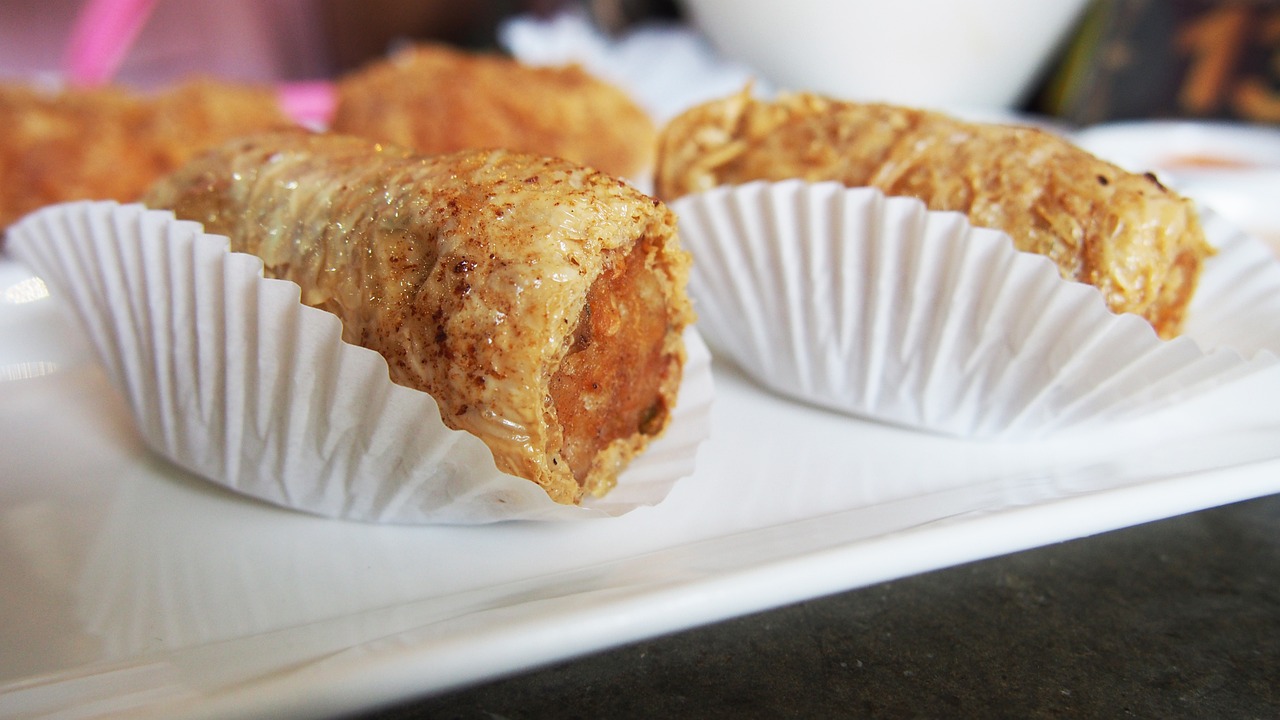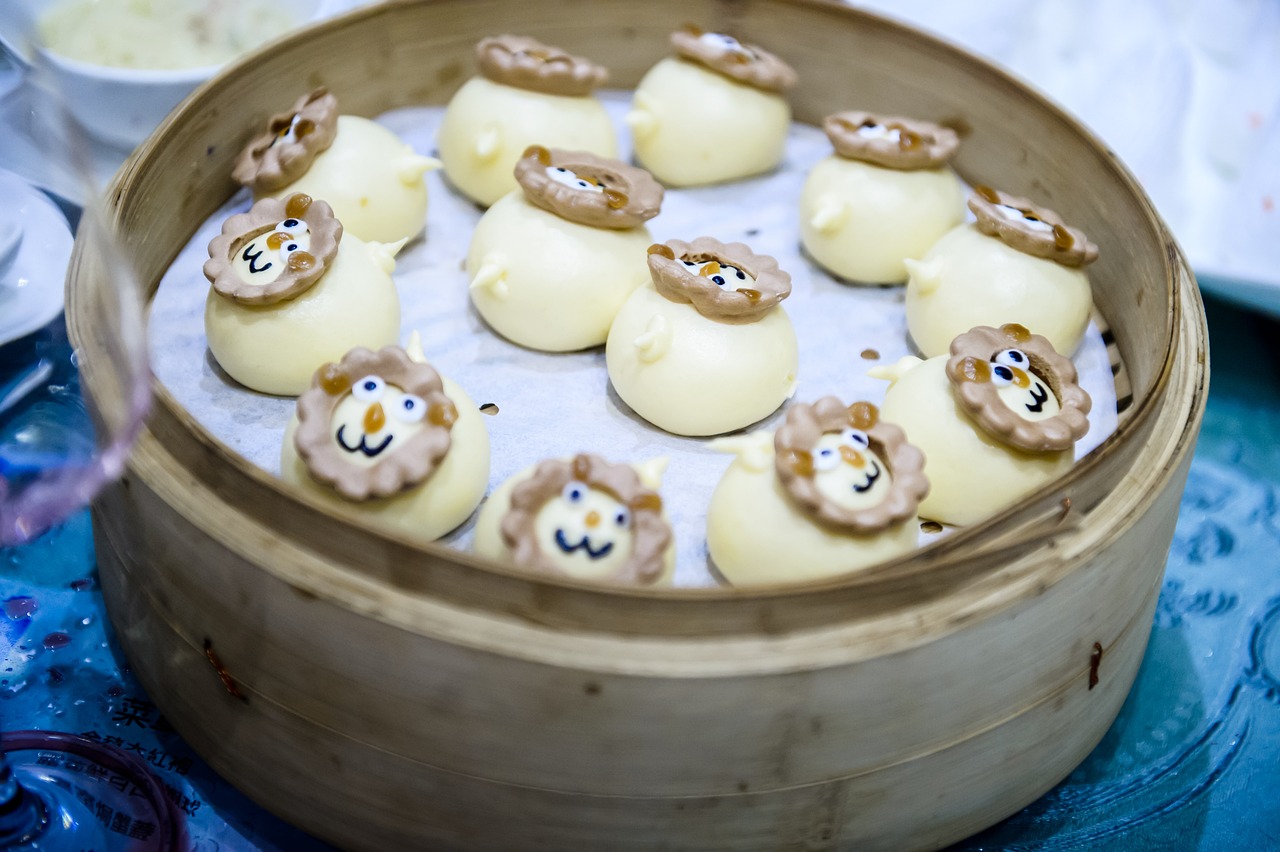Dim Sum Recipe: Assorted Steamed Snacks from Chinese Cuisine

Dim sum is a delightful culinary tradition that hails from the heart of Chinese cuisine, offering a tantalizing array of bite-sized steamed snacks. These assorted steamed delicacies are not just a meal but a cultural experience deeply rooted in Chinese heritage. From savory dumplings to fluffy buns, dim sum is a feast for both the eyes and the taste buds, showcasing the artistry and skill of Chinese chefs.
When it comes to preparing authentic dim sum, the key lies in the meticulous selection of ingredients. From tender dough wrappers to flavorful fillings and aromatic seasonings, each component plays a crucial role in creating the perfect bite. The harmonious blend of textures and tastes in dim sum reflects the rich diversity of Chinese culinary traditions, offering a sensory journey like no other.
To achieve the exquisite texture and taste that define dim sum, mastering the art of steaming is essential. Whether using bamboo steamers or modern steaming equipment, the gentle cooking method ensures that the snacks are cooked evenly while preserving their delicate flavors and textures. The gentle billows of steam that envelop the dim sum create a sensory experience that is as mesmerizing as it is mouthwatering.
Serving and enjoying dim sum is not just a meal but a social affair that brings people together in a shared culinary experience. The communal aspect of dim sum dining encourages conversation, laughter, and the joy of sharing delicious food with loved ones. The bustling ambiance of a dim sum restaurant, filled with the clatter of plates and the aroma of steamed delights, sets the stage for a memorable dining experience that transcends mere sustenance.
Ingredients for Dim Sum
When it comes to preparing authentic dim sum, the key lies in selecting the right ingredients that bring out the flavors and textures of these delightful steamed snacks. Let's delve into the essential components required to create a mouthwatering dim sum feast:
- Dough: The foundation of many dim sum dishes, the dough is typically made from a mixture of wheat starch, rice flour, and water. It should be elastic and easy to work with to create the perfect dumpling wrappers.
- Fillings: From savory to sweet, dim sum fillings vary widely. Common fillings include minced pork, shrimp, mushrooms, and vegetables seasoned with soy sauce, sesame oil, and other traditional Chinese spices.
- Seasonings: Soy sauce, oyster sauce, sesame oil, and rice vinegar are just a few of the seasonings used to enhance the flavors of dim sum dishes. These ingredients add depth and complexity to the overall taste.
- Herbs and Aromatics: Ingredients like ginger, garlic, green onions, and cilantro are often used to infuse dim sum with aromatic flavors that tantalize the taste buds.
- Specialty Ingredients: Some dim sum recipes may call for specialty ingredients like dried shrimp, Chinese sausage, or bamboo shoots, adding unique flavors and textures to the dishes.
By combining these key ingredients in the right proportions, you can create a delectable array of dim sum dishes that showcase the rich culinary heritage of Chinese cuisine. Experiment with different fillings and seasonings to craft your own signature dim sum creations that will impress your guests and leave them craving for more.
Steaming Techniques for Dim Sum
Steaming is a crucial cooking technique in preparing authentic dim sum, ensuring that the snacks are cooked to perfection while preserving their delicate textures and flavors. To achieve the ideal consistency in your dim sum creations, mastering the art of steaming is essential. Here are some key techniques and tips to elevate your dim sum steaming game:
- Use of Bamboo Steamers: Traditional bamboo steamers are commonly used in Chinese cooking for steaming dim sum. These steamers allow for proper air circulation, ensuring even cooking of the snacks.
- Layering: When steaming multiple batches of dim sum, it is important to arrange the snacks in a single layer to prevent overcrowding. This ensures that each piece is evenly cooked.
- Water Level: Maintain the appropriate water level in the steaming vessel to generate enough steam for cooking. Check the water periodically during the steaming process and replenish if needed.
- Steamer Placement: Place the bamboo steamer over simmering water, making sure that the water does not touch the bottom of the steamer. This gentle steam will cook the dim sum gently and evenly.
- Steaming Time: Each type of dim sum has a specific steaming time. It is essential to follow the recipe instructions carefully to avoid overcooking or undercooking the snacks.
By incorporating these steaming techniques into your dim sum preparation, you can ensure that each bite-sized snack is infused with authentic flavors and textures, creating a delightful culinary experience for you and your guests.
Serving and Enjoying Dim Sum
When it comes to serving and enjoying dim sum, it's not just about the food—it's a whole experience. Picture yourself sitting around a bustling table, surrounded by a variety of steaming bamboo baskets filled with delicious bite-sized treats. The atmosphere is lively, with the sound of chatter and clinking teacups filling the air. It's a communal dining affair, where sharing is not just encouraged but expected.
As you sit down to indulge in these mouthwatering delicacies, remember that dim sum is more than just a meal—it's a social event. Take your time to savor each bite, appreciate the complex flavors that burst in your mouth, and engage in conversation with your dining companions. It's a time to connect, share stories, and create memories over a table filled with culinary delights.
One of the unique aspects of enjoying dim sum is the interactive nature of the dining experience. You can pick and choose from a wide array of dishes, from savory dumplings to sweet custard buns, creating your own personalized feast. The variety is endless, ensuring that there's something for every palate at the table.
To fully immerse yourself in the dim sum culture, don't be shy to try new dishes and explore unfamiliar flavors. Let your taste buds be your guide as you navigate through the gastronomic adventure laid out before you. And don't forget to pair your dim sum with a piping hot pot of fragrant Chinese tea to enhance the overall dining experience.
When it comes to serving dim sum, there are a few etiquette rules to keep in mind. Traditionally, the host or most senior person at the table takes the lead in ordering and serving the dishes. It's considered polite to offer food to others before serving yourself, fostering a sense of generosity and camaraderie among diners.
So, the next time you find yourself in a bustling dim sum restaurant, take a moment to appreciate not just the food on your plate but the rich cultural heritage and social traditions that come with it. Dive into the world of dim sum with an open mind and a hungry stomach, and you'll discover a culinary experience like no other.



 HazalVardal
HazalVardal 





